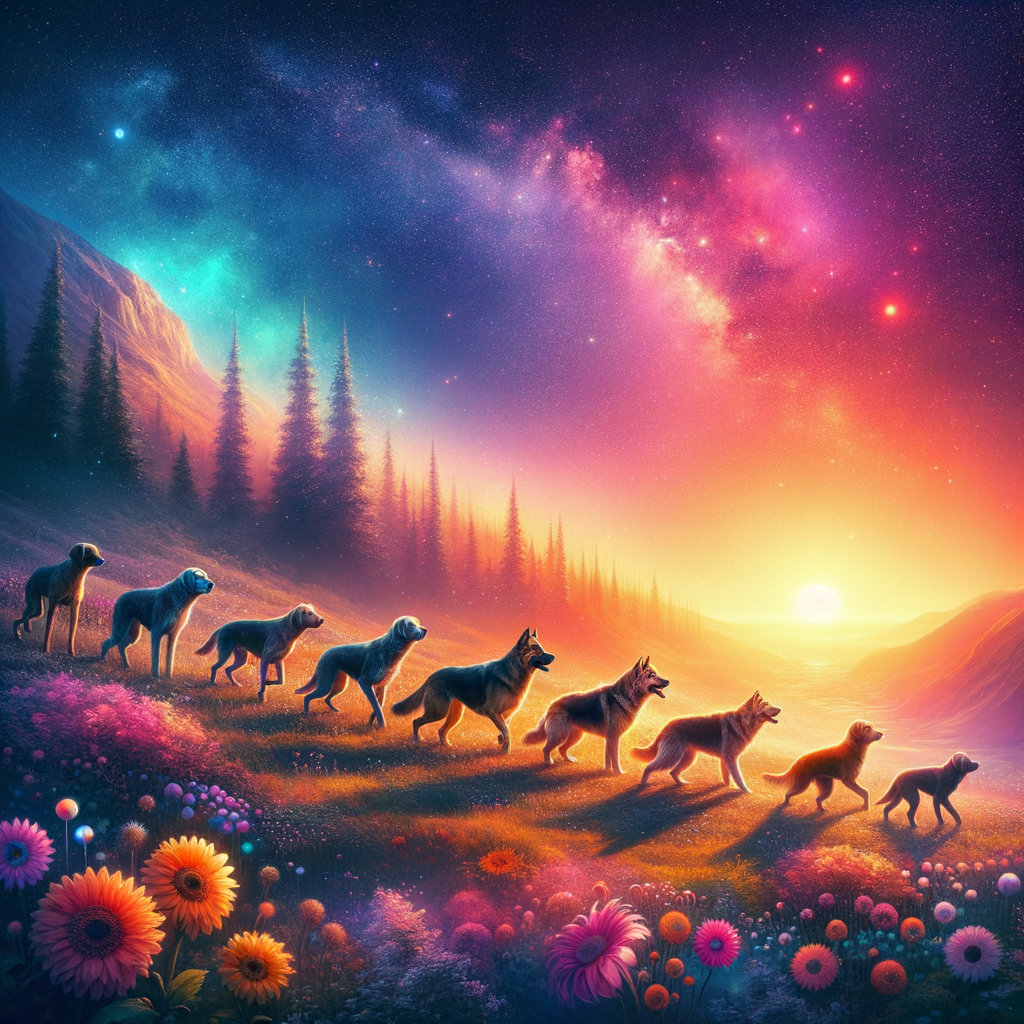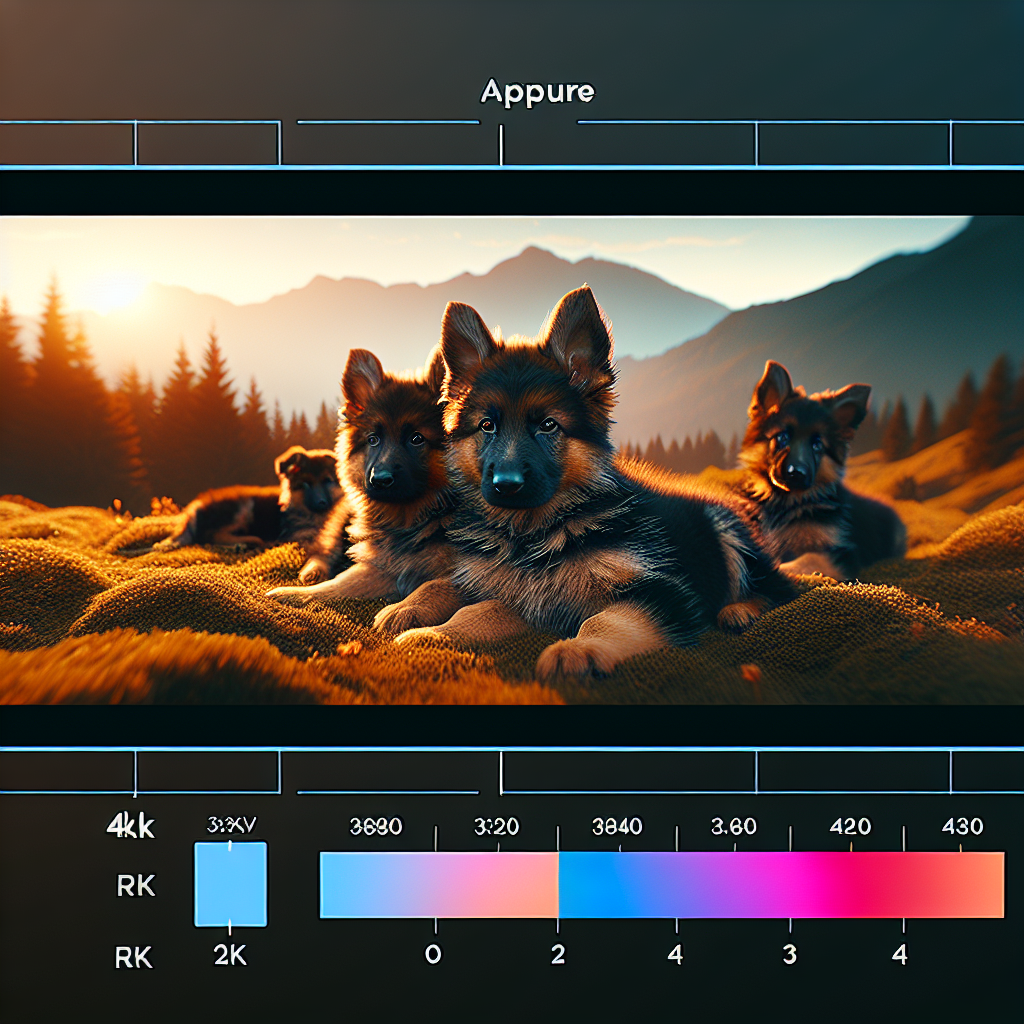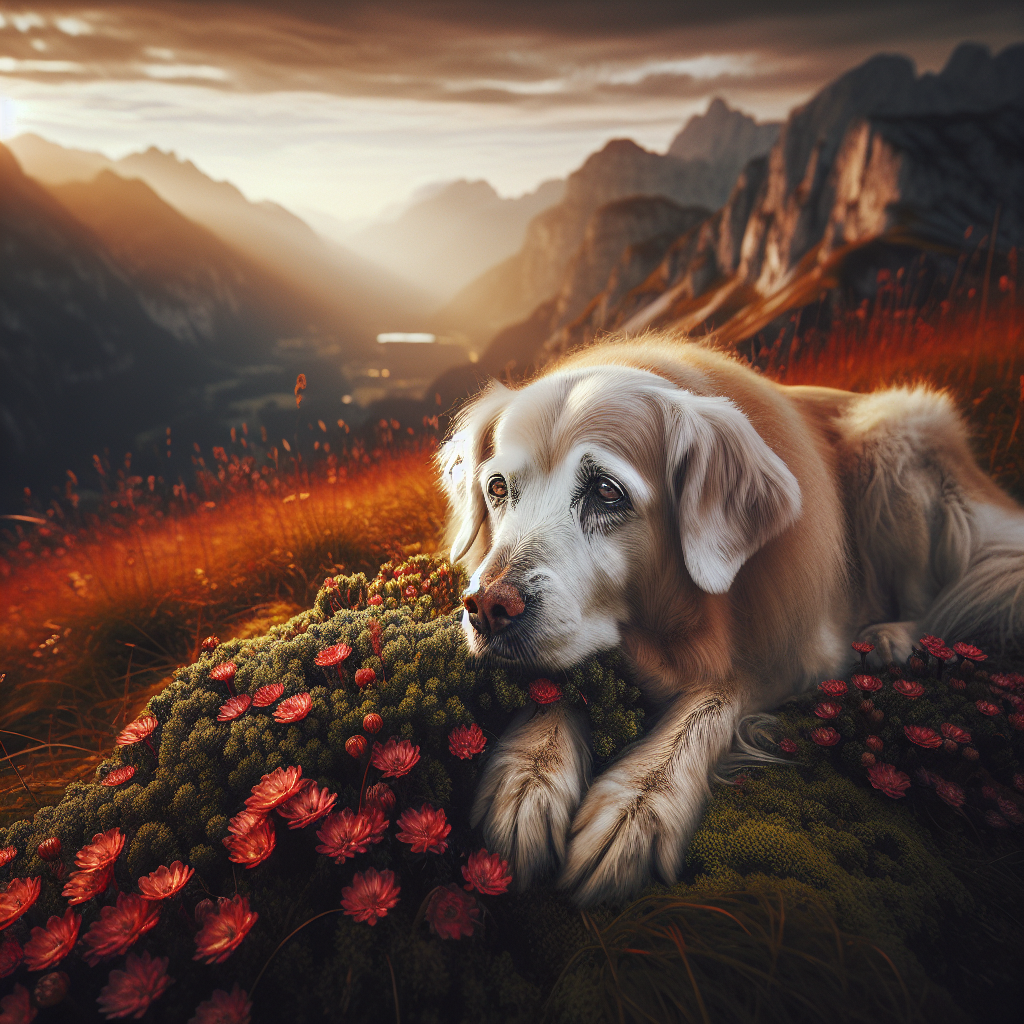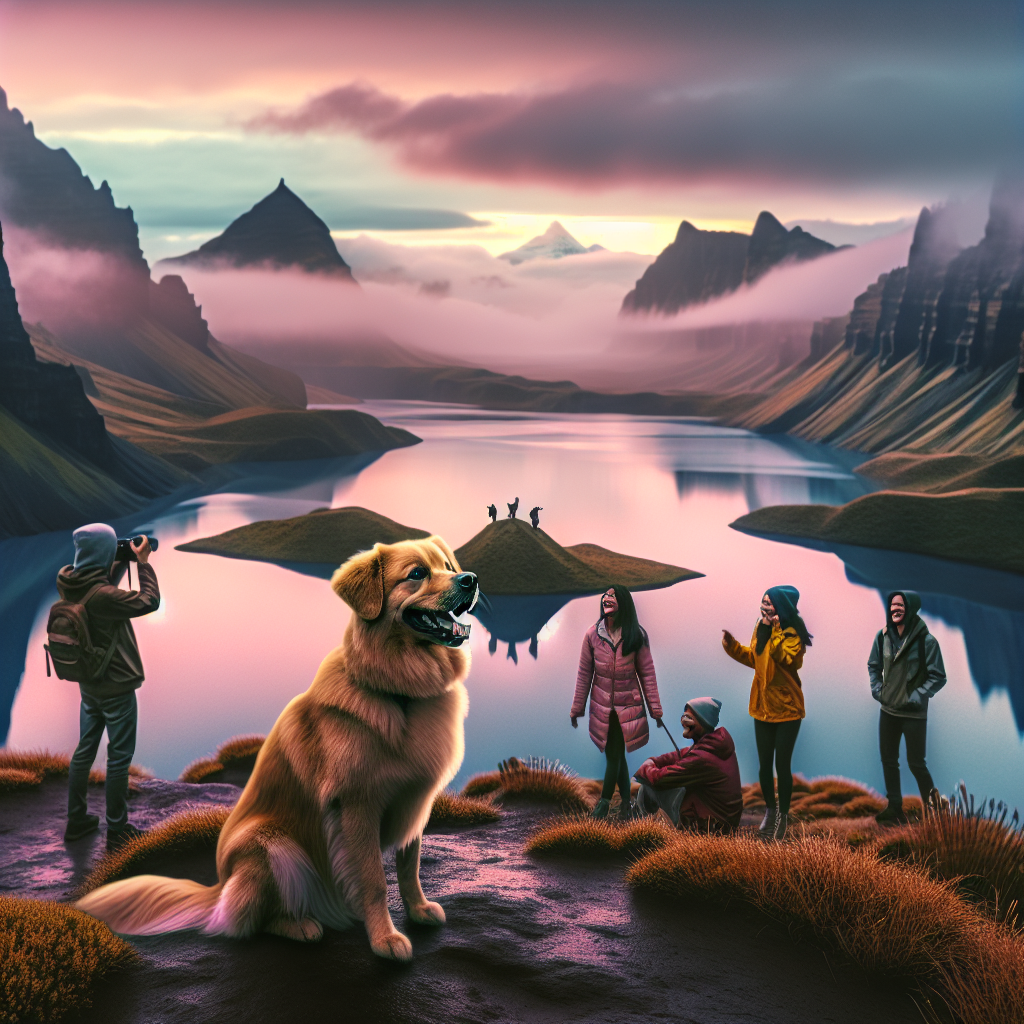The History of Dogs: Evolution and Domestication Explained
The history of dogs is a fascinating journey that spans thousands of years. From their ancient ancestors to the beloved pets we know today.

The History of Dogs: Evolution and Domestication Explained
-
Table of Contents
- Introduction
- The Origins of Dogs: Tracing Their Ancestry
- The Evolutionary Journey of Dogs: From Wolves to Companions
- Ancient Dog Breeds: Uncovering the Early Domestication Process
- Dogs in Ancient Civilizations: Their Roles and Significance
- Modern Dog Breeds: How Selective Breeding Shaped Canine Diversity
- Conclusion
Introduction
The history of dogs is a fascinating journey that spans thousands of years. From their ancient ancestors to the beloved pets we know today, dogs have undergone a remarkable process of evolution and domestication. This article aims to provide an overview of the history of dogs, exploring their evolutionary origins and the ways in which they became our loyal companions.
The Origins of Dogs: Tracing Their Ancestry
Dogs have been our loyal companions for thousands of years, but have you ever wondered where they came from? The history of dogs is a fascinating tale of evolution and domestication that stretches back tens of thousands of years. To understand their origins, we must trace their ancestry to their wild relatives.
The story begins with the gray wolf, Canis lupus, which is believed to be the common ancestor of all modern dog breeds. Wolves are highly social animals that live in packs, and it is thought that some wolves began to form a symbiotic relationship with early humans. These wolves were likely attracted to the scraps of food left behind by humans, and over time, they became more comfortable living in close proximity to humans.
As humans transitioned from hunter-gatherer societies to settled agricultural communities, the relationship between humans and wolves deepened. Wolves that were less aggressive and more tolerant of human presence were more likely to survive and reproduce. This led to the gradual domestication of wolves, as humans began to selectively breed them for specific traits.
The process of domestication was a slow one, taking place over thousands of years. As wolves became more accustomed to living with humans, they began to exhibit physical and behavioral changes. Their coats became more varied in color and texture, and their ears and tails became more floppy. These changes were likely the result of genetic mutations that were favored by humans.
At some point, these domesticated wolves diverged from their wild counterparts and became a distinct species. This new species, known as Canis lupus familiaris, was the ancestor of all modern dog breeds. The exact timing and location of this divergence is still a subject of debate among scientists, but it is generally believed to have occurred between 20,000 and 40,000 years ago.
Once dogs had been domesticated, they quickly spread across the globe. They accompanied humans on their journeys, providing companionship, protection, and assistance with hunting and herding. Dogs played a crucial role in the survival and success of early human civilizations.
Over time, humans began to selectively breed dogs for specific purposes. Some breeds were developed for their strength and size, making them ideal for guarding and protection. Others were bred for their speed and agility, making them excellent hunting companions. The diversity of dog breeds we see today is a testament to the ingenuity and creativity of humans.
In recent years, scientists have made great strides in understanding the genetic history of dogs. Through DNA analysis, they have been able to trace the origins of different dog breeds and uncover the relationships between them. This research has shed light on the complex and intertwined history of humans and dogs.
Today, dogs continue to be an integral part of our lives. They provide us with companionship, love, and support. Whether they are working dogs, service dogs, or simply beloved pets, dogs have a special place in our hearts.
So the next time you look into the eyes of your furry friend, remember that they are the result of thousands of years of evolution and domestication. They are a testament to the enduring bond between humans and animals, and a reminder of the incredible journey that has brought us together.
The Evolutionary Journey of Dogs: From Wolves to Companions
Dogs have been our loyal companions for thousands of years, but have you ever wondered how they came to be? The history of dogs is a fascinating tale of evolution and domestication that spans thousands of years. In this article, we will explore the evolutionary journey of dogs, from their wild ancestors to the beloved companions we know today.
To understand the origins of dogs, we must first look to their closest relatives: wolves. Wolves are highly social animals that live in packs, and it is believed that dogs descended from a common ancestor with wolves. This ancestor was likely a wolf-like animal that lived over 15,000 years ago. Over time, some of these animals began to exhibit traits that made them more suitable for living alongside humans.
The process of domestication began when early humans started to form settlements and engage in agriculture. As humans settled down, they attracted scavengers like wolves, who were drawn to the abundance of food scraps left behind. These wolves were less fearful of humans and gradually became more comfortable living in close proximity to them.
Over generations, the wolves that were more tolerant of humans began to benefit from this relationship. They had access to a reliable food source and protection from other predators. As a result, these wolves started to develop traits that made them more suitable for living with humans. They became less aggressive, more sociable, and more adaptable to different environments.
This gradual process of self-domestication led to the emergence of a new species: the dog. The early dogs were not the distinct breeds we see today, but rather a diverse group of animals that shared common traits. They were smaller in size, had shorter snouts, and had a more varied coat coloration compared to their wolf ancestors.
As humans continued to evolve and develop civilizations, dogs played an increasingly important role in their lives. Dogs were used for hunting, herding, and guarding, as well as companionship. They became an integral part of human society, and their close relationship with humans continued to shape their evolution.
Selective breeding played a significant role in the development of different dog breeds. Humans began to selectively breed dogs with specific traits to enhance their abilities for different tasks. For example, dogs with a keen sense of smell were bred for hunting, while those with strong herding instincts were bred for herding livestock.
Today, there are hundreds of dog breeds, each with its own unique characteristics and traits. From the tiny Chihuahua to the majestic Great Dane, dogs come in all shapes and sizes. However, despite their diverse appearances, all dogs share a common ancestry and are descendants of those early wolves that chose to live alongside humans.
In conclusion, the history of dogs is a remarkable journey of evolution and domestication. From their wild ancestors to the beloved companions we know today, dogs have undergone significant changes over thousands of years. Their close relationship with humans has shaped their evolution, leading to the diverse array of breeds we see today. So the next time you look into the eyes of your furry friend, remember the incredible journey that brought them into your life.
Ancient Dog Breeds: Uncovering the Early Domestication Process
Dogs have been our loyal companions for thousands of years, but have you ever wondered how they came to be domesticated? The history of dogs is a fascinating tale of evolution and the early domestication process. In this article, we will delve into the ancient dog breeds and uncover the secrets of their early domestication.
To understand the domestication of dogs, we must first look back to their wild ancestors. The closest living relative of the domestic dog is the gray wolf. It is believed that dogs and wolves shared a common ancestor around 40,000 years ago. Over time, some wolves began to exhibit more friendly and sociable behaviors towards humans, which eventually led to their domestication.
The process of domestication was not a sudden event but rather a gradual one. Early humans would have encountered wolves in their surroundings and observed their behaviors. They would have noticed that some wolves were more approachable and less aggressive than others. These wolves may have been more willing to scavenge for food near human settlements, leading to a mutually beneficial relationship.
As humans began to form settled communities, they would have realized the advantages of having these friendly wolves around. They could serve as guards, companions, and even help with hunting. This realization marked the beginning of the domestication process.
Over time, humans selectively bred these friendly wolves, favoring certain traits that were desirable for their specific needs. This selective breeding led to the development of different breeds with distinct characteristics. Ancient dog breeds, such as the Saluki, Basenji, and Akita, can be traced back to this early domestication process.
The Saluki, for example, is one of the oldest known dog breeds, dating back to ancient Egypt. These dogs were highly valued for their hunting skills and were often depicted in ancient Egyptian art. The Basenji, on the other hand, originated in Central Africa and is known for its unique yodel-like bark. The Akita, originating from Japan, was bred for its strength and loyalty, making it a prized companion and guard dog.
These ancient dog breeds played important roles in the lives of early humans. They were not just pets but integral members of the community. They provided protection, assistance in hunting, and companionship. The bond between humans and dogs grew stronger with each generation, solidifying the domestication process.
As time went on, dogs continued to evolve alongside humans. They adapted to different environments and were bred for specific purposes. Some breeds were developed for herding, others for guarding, and some for companionship. The diversity of dog breeds we see today is a testament to the long and complex history of their domestication.
In conclusion, the ancient dog breeds we know today are the result of a gradual domestication process that began thousands of years ago. Early humans recognized the benefits of having friendly wolves around and selectively bred them to develop different breeds with specific traits. These ancient dog breeds played vital roles in the lives of early humans, serving as companions, protectors, and helpers. The history of dogs is a testament to the enduring bond between humans and their loyal four-legged friends.
Dogs in Ancient Civilizations: Their Roles and Significance
Dogs have been a part of human civilization for thousands of years, and their presence can be traced back to ancient times. In fact, dogs played significant roles in various ancient civilizations, serving as loyal companions, protectors, and even spiritual symbols. Let’s delve into the fascinating history of dogs in ancient civilizations and explore their roles and significance.
One of the earliest civilizations where dogs were revered is ancient Egypt. The Egyptians believed that dogs possessed protective qualities and were associated with the god Anubis, who had the head of a jackal. Dogs were often depicted in Egyptian art and were even buried alongside their owners to accompany them in the afterlife. These loyal creatures were highly regarded and were considered sacred.
Moving on to ancient Greece, dogs held a prominent place in society. They were valued for their hunting skills and were often used in the pursuit of game. Greek literature and mythology are filled with references to dogs, such as the legendary three-headed dog Cerberus, who guarded the gates of the underworld. Dogs were also seen as symbols of loyalty and fidelity, and their images were frequently used in artwork and sculptures.
In ancient Rome, dogs were not only valued for their hunting abilities but also for their loyalty and companionship. They were often kept as pets by the wealthy and were even given names. Dogs were also used in military campaigns, serving as sentries and trackers. The Romans believed that dogs had the ability to sense danger and would often rely on their instincts to protect their owners.
Moving eastward, ancient China also had a deep appreciation for dogs. They were considered symbols of good luck and prosperity. The Chinese believed that dogs had the ability to ward off evil spirits and bring blessings to their homes. Dogs were often depicted in Chinese art and were even included in the Chinese zodiac as one of the twelve animal signs.
In ancient India, dogs held a special place in society as well. They were considered loyal and faithful companions and were often associated with the god Yama, the ruler of the afterlife. Dogs were believed to guide souls to the realm of the dead and were seen as protectors against evil spirits. In Hindu mythology, the dog is also associated with the god Bhairava, who is often depicted with a dog as his companion.
Throughout these ancient civilizations, dogs played significant roles in the lives of humans. They were not only valued for their practical uses, such as hunting and protection, but also for their companionship and spiritual significance. Dogs were seen as loyal and faithful creatures, and their presence brought comfort and joy to their owners.
In conclusion, dogs have been an integral part of human civilization since ancient times. From ancient Egypt to Greece, Rome, China, and India, dogs held important roles and were revered for their loyalty, companionship, and protective qualities. These ancient civilizations recognized the significance of dogs and celebrated their presence in various aspects of life. Today, dogs continue to be cherished companions, reminding us of the enduring bond between humans and animals that has spanned centuries.
Modern Dog Breeds: How Selective Breeding Shaped Canine Diversity
Modern Dog Breeds: How Selective Breeding Shaped Canine Diversity
Now that we have explored the fascinating evolution and domestication of dogs, it is time to delve into the world of modern dog breeds and how selective breeding has played a significant role in shaping the incredible diversity we see today. From tiny Chihuahuas to massive Great Danes, there is a breed to suit every person’s preferences and lifestyle.
Selective breeding, also known as artificial selection, is the process of intentionally breeding dogs with specific traits to produce offspring with those desired characteristics. This practice has been going on for centuries, with humans carefully selecting dogs for various purposes such as hunting, herding, guarding, and companionship.
One of the earliest examples of selective breeding can be traced back to ancient Egypt, where Pharaohs bred dogs for their unique physical attributes and loyal temperament. These dogs were highly regarded and often depicted in ancient Egyptian art. Similarly, the Romans selectively bred dogs for their fighting abilities, resulting in the creation of breeds like the Mastiff and the Bulldog.
During the Middle Ages, selective breeding became more widespread as people began to breed dogs for specific tasks. For instance, the Border Collie was bred for its exceptional herding skills, while the Greyhound was selectively bred for its incredible speed and agility in hunting. These early breeding efforts laid the foundation for the diverse range of dog breeds we have today.
The 19th century marked a significant turning point in the history of dog breeding. With the rise of dog shows and the establishment of kennel clubs, breed standards were developed to define the ideal characteristics for each breed. These standards outlined specific physical traits, such as coat color, size, and body proportions, as well as temperament and behavior.
Breeders began meticulously selecting dogs that met these standards and breeding them together to produce offspring that adhered to the desired breed characteristics. This led to the creation of purebred dogs, which are dogs that belong to a specific breed and have a documented pedigree.
However, the pursuit of breed standards and the desire for certain physical traits also had its downsides. In some cases, excessive selective breeding led to health issues in certain breeds. For example, the flat face of the Bulldog and the short legs of the Dachshund can cause breathing difficulties and spinal problems, respectively.
In recent years, there has been a growing awareness of these health concerns, and efforts are being made to promote responsible breeding practices. Breeders are now focusing on maintaining the breed’s unique characteristics while also prioritizing the overall health and well-being of the dogs.
Despite the challenges, selective breeding has undeniably shaped the incredible diversity of modern dog breeds. From the tiny Yorkshire Terrier to the majestic Siberian Husky, each breed has its own distinct set of traits and characteristics that make them unique.
So, the next time you see a dog that catches your eye, remember that behind its appearance lies a rich history of selective breeding. These dogs are a testament to the ingenuity and dedication of humans in shaping the canine world, and they continue to bring joy and companionship to millions of people around the globe.
Conclusion
In conclusion, the history of dogs involves a long process of evolution and domestication. Dogs are believed to have descended from wolves, with evidence suggesting that the domestication process began around 20,000 to 40,000 years ago. Over time, humans selectively bred dogs for various purposes, leading to the diverse range of breeds we see today. Dogs have played significant roles in human societies, serving as companions, working animals, and even in scientific research. Understanding the history of dogs provides valuable insights into the complex relationship between humans and animals.





